What causes decline of tropical seagrass meadows?
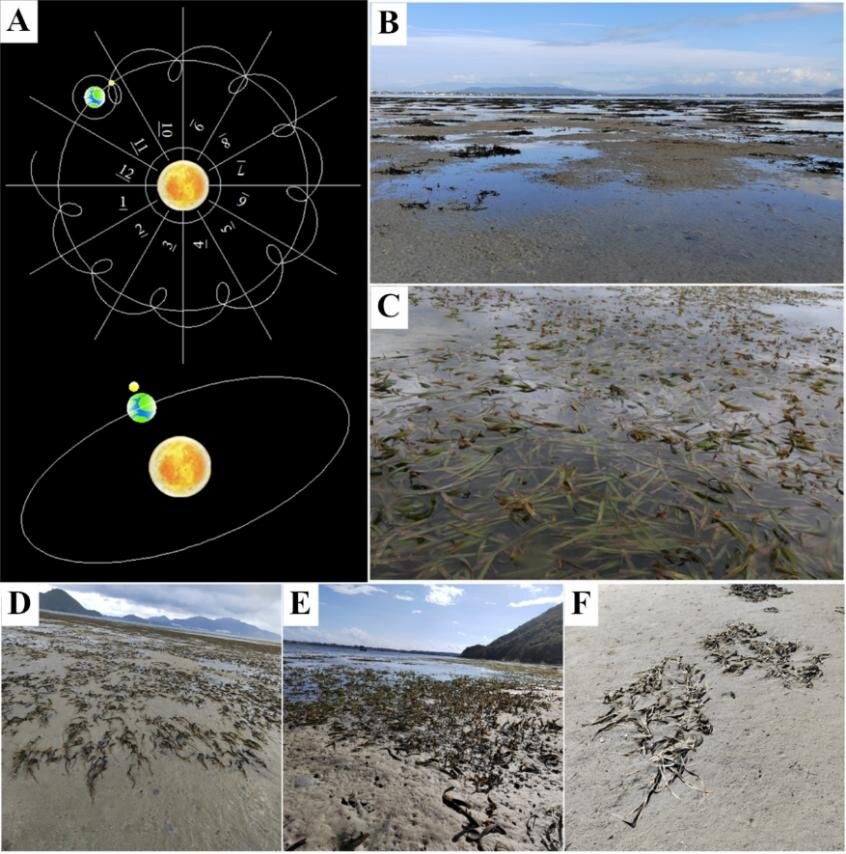
Seagrass, a group of aquatic angiosperms, grows in shallow waters in the coastal sea and contributes most of the primary production while participating in many important ecological processes. Heat stress threatens the survival of seagrass, but its damage mechanisms are unclear. Recently, a research team led by Prof. Liu Jianguo from the Institute of Oceanology of the Chinese Academy of Sciences (IOCAS) primarily explained the physiological and biochemical mechanisms underlying the decline of tropical seagrass meadows caused by heat stress combined with high light at different functional levels. The study was published in Marine Pollution Bulletin. During the lowest tide, intertidal seagrass is frequently faced with the combined stress of exposure to air, direct sunlight, and high temperature, which may have a strongly negative impact on the survival of seagrass, especially in the context of global warming. The researchers found that the largest tropical seagrass Enhalus acoroides can withstand heat below 39°C in the dark. However, under high light, the tolerance to heat stress is greatly reduced. The combined effect of short-term exposure to heat and high light stress destroyed the photosystem II (PSII) and destroyed key components of the photosynthetic system in seagrass leaves. Moreover, high light combined with heat stress caused severe oxidative stress in the seagrass, which led to irreversible damage to the seagrass. These results clearly suggest that heat stress coupled with high light, may be an important cause for the decline of E. acoroides meadows. “Our study reveals that ocean warming, especially when coupled with high light, exacerbates the decline of seagrass meadows and affects the ecological function of intertidal seagrass meadows,” said Dr. Zhang Mengjie, first author of the study. “This serves as a warning that the effects of global warming on seagrass meadows will be even worse than expected,” said Prof. Liu, corresponding author of the study. More information: Mengjie Zhang et al, Heat stress, especially when coupled with high light, accelerates the decline of tropical seagrass (Enhalus acoroides) meadows, Marine Pollution Bulletin (2023). DOI: 10.1016/j.marpolbul.2023.115043
Fauna return rapidly in planted seagrass meadows, study shows
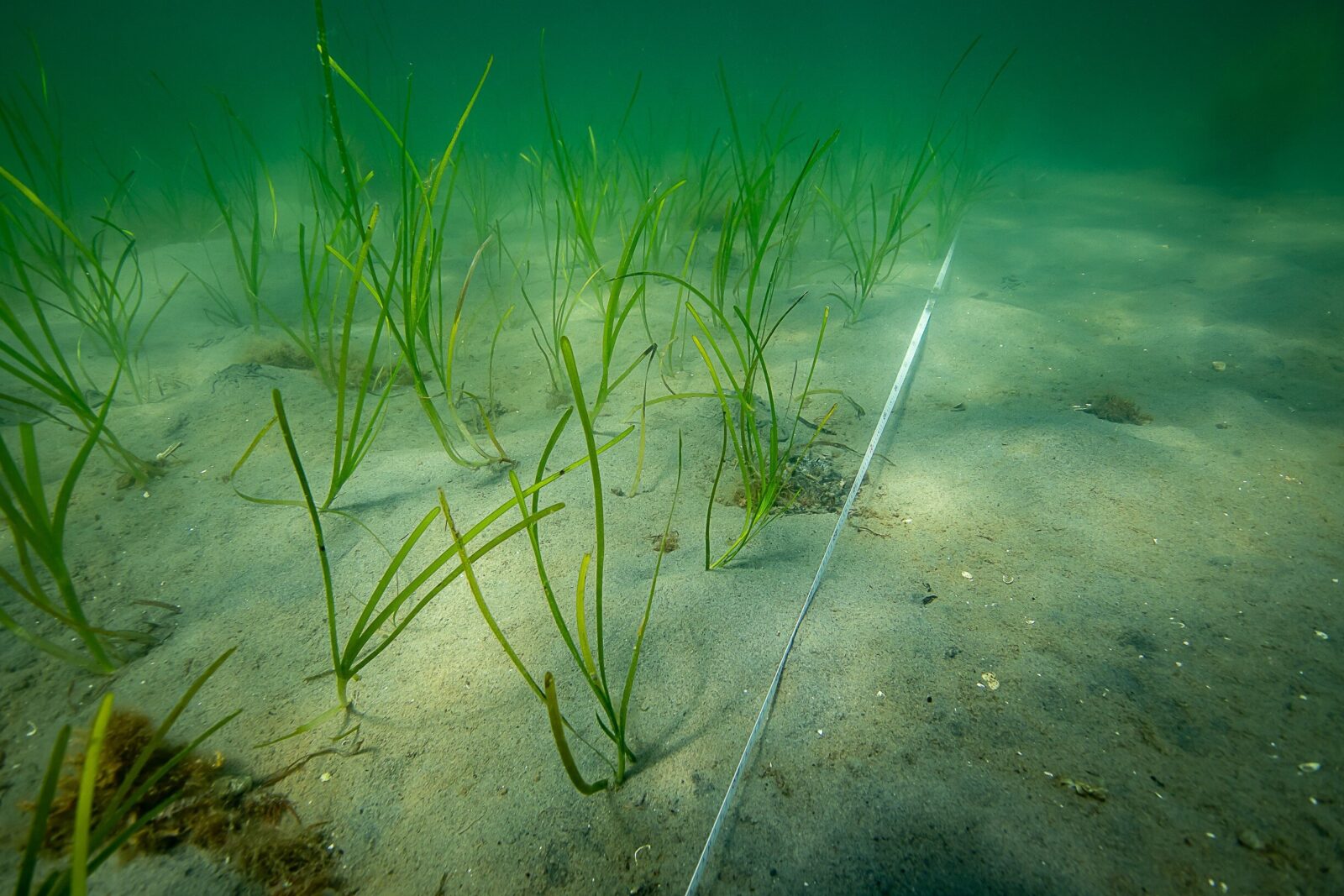
A study of eelgrass meadows planted by researchers from the University of Gothenburg shows that fauna return rapidly once the eelgrass has started to grow. Already after the second summer, the biodiversity in the planted meadow was almost the same as in old established eelgrass meadows. Eelgrass meadows have declined heavily in southern Bohus county in recent decades and in many places have disappeared altogether. Researchers at the University of Gothenburg have been working on the restoration of eelgrass meadows for twelve years. These meadows are important for biodiversity, as the eelgrass serves as habitat or nursery for young cod, crabs and shrimps for example. In a new study, the researchers have evaluated how rapidly replanted eelgrass gets populated by various invertebrates. The study has been going on for over two years in a bay near Gåsö island just west of Skaftö in Bohus county, and the findings are very positive. The researchers counted the abundance of invertebrates that live or burrow in bottom sediments or on the surface of bottom sediments. Size less important “The recolonization has been very rapid. After the first three-month growing season, up to 80 percent of the invertebrates had returned to the newly planted eelgrass,” says Eduardo Infantes, marine biologist at the University of Gothenburg. During the summer in 2019, the researchers planted the eelgrass shoots in four test plots of different sizes on the seabed, and with different spacing between the shoots. According to the researchers’ observations in autumn 2020, size has played less of a role in the recovery of biodiversity in the eelgrass meadows. In fact, even if the eelgrass has not had time to grow to the same density as in an established eelgrass meadow, the biodiversity is similar after only two growing seasons as in a reference area of preserved eelgrass in the same bay. Even smaller patches embedded within larger restoration plots showed good results. Their findings were reported in the journal Restoration Ecology. Can save money “This is good news for future restorations and new plantings of eelgrass meadows. We can plant new smaller plots with fewer shoots and this saves money because this is an expensive method for restoring biodiversity on the seabed,” says Eduardo Infantes. Eelgrass meadows have multiple functions that make it imperative to protect them. In addition to their important role in the coastal ecosystem, eelgrass roots bind the sediment and prevent erosion and limit resuspension of sediment in the water. More information: Karine Gagnon et al, Rapid faunal colonization and recovery of biodiversity and functional diversity following eelgrass restoration, Restoration Ecology (2023). DOI: 10.1111/rec.13887
Seagrass meadows show resilience to ‘bounce back’ after die-offs
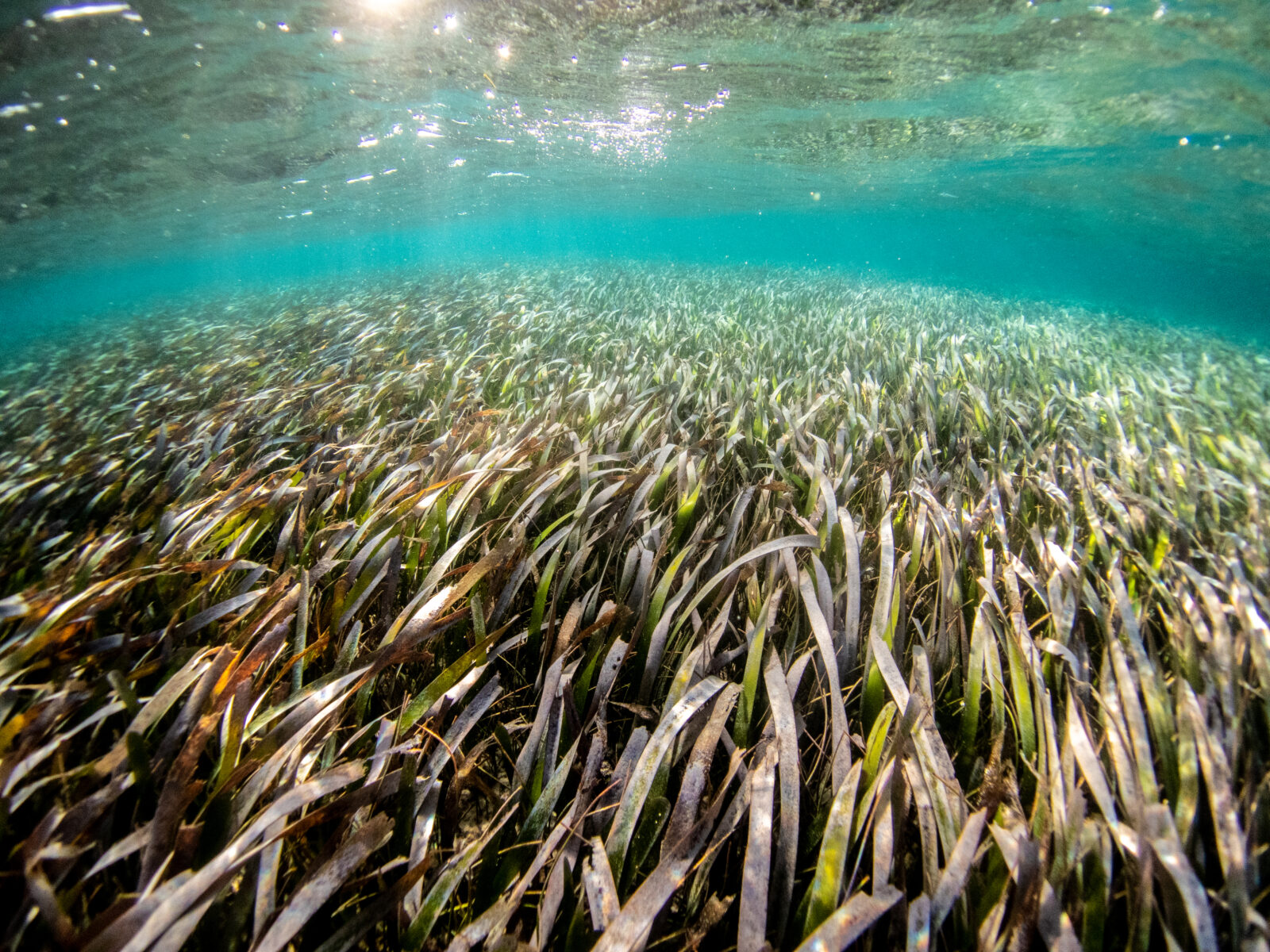
In Florida alone, thousands of acres of marine seagrass beds have died. Major seagrass die-offs also are occurring around the world. Stressors such as high temperature, hypersalinity and hypoxia or lack of oxygen affect seagrasses’ ability to resist and recover from these stressor-related mortality events or when disturbances lead to seagrass die-off events. Seagrass die-offs also are linked to exposure to sediment-derived hydrogen sulfide, a well-known phytotoxin that accumulates as seagrass ecosystems become more enriched in nutrients. While hydrogen sulfide intrusion into seagrass tissue is considered a leading cause of recurring mortality events, its effects on subsequent recruitment and distribution of new populations is unclear. Moreover, few studies have examined the ability of seagrass meadows‘ resilience to “bounce back” and recolonize in open bare patches. Researchers from Florida Atlantic University, in collaboration with the South Florida Water Management District, Coastal Ecosystems Division, examined if porewater hydrogen sulfide prevents Thalassia testudinum, a dominant tropical Atlantic-Caribbean marine seagrass known as turtlegrass, from recruiting into unvegetated sediment in Florida Bay. The bay is an estuary that covers about 1,100 square miles between the southern tip of Florida and the Florida Keys and is one of the largest global contiguous seagrass systems. Since the 1980s, seagrass meadows in Florida Bay have experienced repeated biomass losses, including massive die-off events of turtlegrass, which typically occur during high temperature and salinity conditions in the northcentral and western bay. The bay provided an excellent case-study site due to high porewater hydrogen sulfide and expansive unvegetated areas adjacent to intact meadows that are recolonized by turtlegrass recruits following morality events. For the study, researchers examined the leaf, stems and root tissue of turtlegrass in Florida Bay to establish tissue exposure to hydrogen sulfide in new recruits and measured internal hydrogen sulfide and oxygen dynamics using cutting-edge microsensors in the field and stable isotope analyses. Results, published in the journal Aquatic Botany, provide evidence that turtlegrass can successfully recruit into open bare sediment following die-off events due to biomass partitioning—a process by which plants divide their energy among their leaves, stems, roots and reproductive parts—during early development, young root structure, and an ability to efficiently oxidize internally, which lowers hydrogen sulfide exposure. However, recovery of seagrass meadows takes time. “Long-term monitoring programs in Florida Bay indicate that the time frame for full recovery of turtlegrass meadows after major die-off events is at least a decade,” said Marguerite Koch, Ph.D., senior author and a professor of biological sciences in FAU’s Charles E. Schmidt College of Science. “Therefore, preventing large-scale seagrass mortality events should be the management goal, particularly as global warming and associated stressors are likely to get more extreme in the future.” Findings of the study indicate that recruiting shoot resistance to hydrogen sulfide exposure is linked to adequate oxidation of internal tissue during the day through late afternoon via photosynthesis and internal plant oxidation promoted by water column oxygen diffusion into the leaves at night, driven at times by tides. Limited belowground root development in new recruits potentially constrains microbial community development and associated sulfate reduction that decrease hydrogen sulfide intrusion into roots and negatively affecting sensitive growing tissue at the base of the seagrass leaves. “Seagrass meadows sustain coastal ecosystems by protecting against erosion, maintaining water quality and providing habitat and food for many marine species and organisms,” said Koch. “Because of their importance in coastal communities, the current decline of seagrass ecosystems on a global scale across geographic regions is a concern.” More information: K. MacLeod et al, Resilience of recruiting seagrass (Thalassia testudinum) to porewater H2S in Florida Bay, Aquatic Botany (2023). DOI: 10.1016/j.aquabot.2023.103650
Visiting one of the worlds most remote seagrass meadows
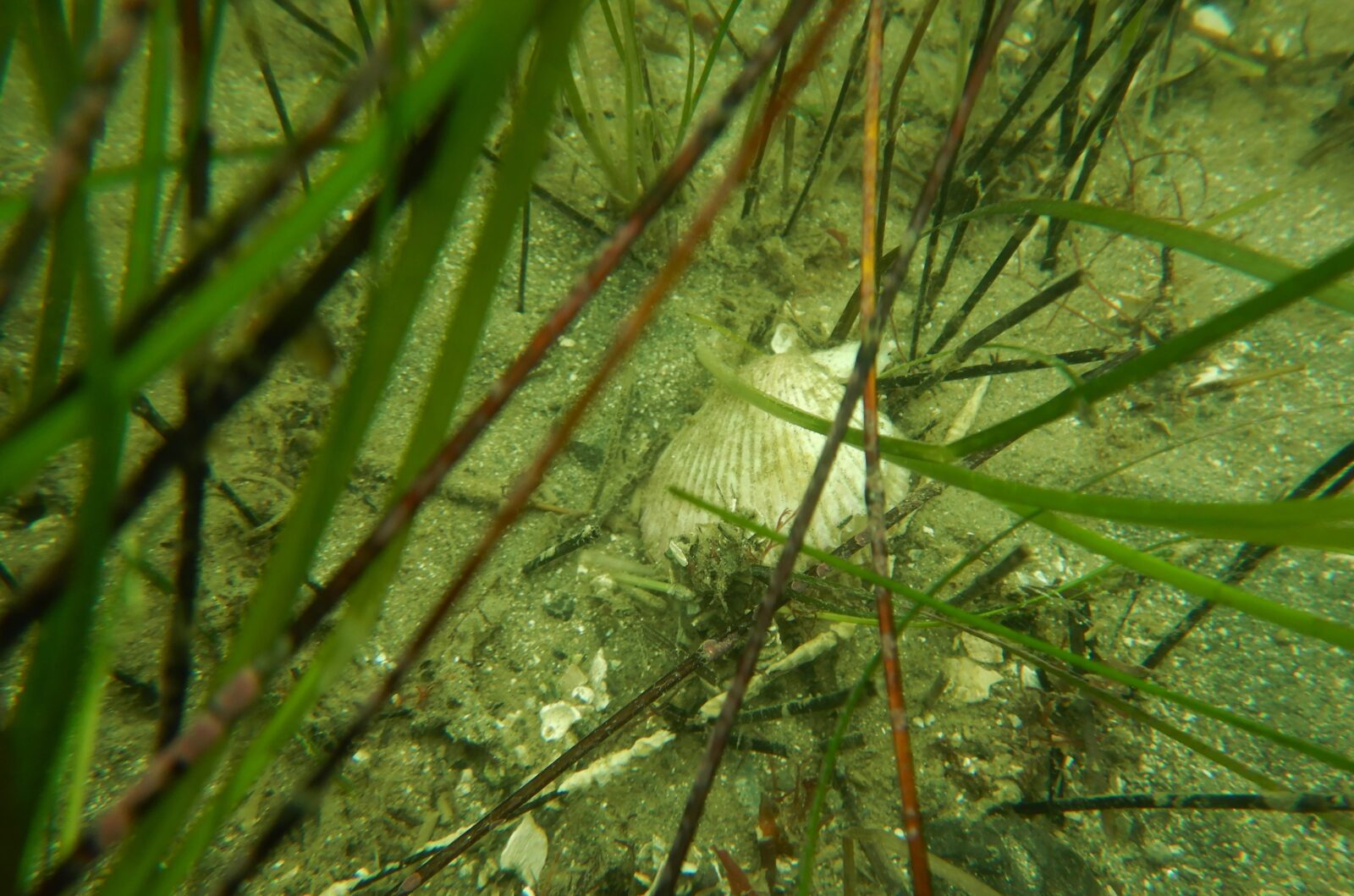
Eva Rothausler On a narrow stretch along the northern-central coast of Chile, the seagrass Heterozostera nigricaulis (syn. Zostera nigricaulis, Heterozostera tasmanica) occurs in three isolated patches no more than 300 km apart. It is a common intertidal to subtidal seagrass in the Zosteracea family and is found growing in protected and soft-bottom areas. Heterozostera nigricaulis is native to the southern coast of Australia (Coyer et al. 2013), from where it colonized Chile some 100s to 1000s years ago (Smith et al. 2018). In Australia, they form extensive meadows that produce large quantities of non-buoyant seeds and specialized vegetative rhizomes used for dispersal (Thomson et al. 2015, Smith et al. 2016, 2018). In Chile, however, H. nigricaulis was never found to flower or produce seeds. Instead, they likely grow only vegetatively, as suggested by a recent study that found the three populations to consist of only two non-flowering clones that are not mixed (Smith et al. 2018). The seagrass meadow of H. nigricaulis at Puerto Aldea is situated in the southern part of the Tongoy Bay, at a small fishing caleta. It has a continuous distribution at 1 to 6 m depth (personal observation) and is protected from onshore winds and waves by the headland Punta Lengua de Vaca, which is an important upwelling zone. The spatial extent of the meadow is about 1.2 km2 (Phillips et al. 1983) where it also grows under the jetty of the fishing caleta. Due to its remoteness and rare occurrence, H. nigricaulis is classified as endangered by the Chilean Ministry of Environment (https://clasificacionespecies.mma.gob.cl/). To date 117 different species of macroinvertebrates and 16 fish species have been reported from the seagrass meadow at Puerto Aldea (González 1990), but most likely the diversity is even higher. The meadow at Puerto Aldea is habitat to the commercially exploited species such as Argopecten purpuratus (scallop) and Romaleon setosum (crab) (Pérez-Matus et al. 2005, SUBPESCA Chile). Consequently, artisanal fishers use the meadow to extract scallops and they have recognized that it serves as an ideal nursery ground for this species, i.e. without seagrass there are no natural scallop populations. For this reason, the fishers protect their seagrass meadow (personal communication). It is estimated that about 30 artisanal fishers are associated to the fishing caleta (SUBPESCA Chile) at Puerto Aldea. As H. nigricaulis seagrass meadows are rare in Chile but provide important ecosystem services, e.g., livelihoods for fishers and efficient carbon sinks (nature-based climate change solutions), their protection must become an important priority in Chile. References Coyer JA, Hoarau G, Kuo J, et al. 2013. Phylogeny and temporal divergence of the seagrass family Zosteraceae using one nuclear and three chloroplast loci. Systematics and Biodiversity 11:271–284. González SA 1990. Heterozostera tasmanica (Martens ex Aschers.) den Hartog y comunidad asociada en el norte de Chile. Pre-graduate thesis in Spanish. Universidad Católica del Norte, Chile. Pérez-Matus A, Cifuentes M, Araya P et al. 2005. Solitary seagrass meadow in Chile supports a unique scallop garden.JMBA Global Marine Environment 2:1-4. Phillips RC, Santelices B, Bravo R, McRoy CP 1983. Heterozostera tasmanica (Martensex Aschers.) den Hartog in Chile. Aquat Bot 15:195-200. Smith TM, York PH, Broitman BR, et al. 2018. Rare long-distance dispersal of a marine angiosperm across the Pacific Ocean. Global Ecol Biogeogr 27:487-496. Smith TM, York PH, Keough MJ, et al. 2016. Spatial variation in reproductive effort of a Southern Australian seagrass. Marine and Freshwater Research 120:214-224. Thomson ACG, York PH, Smith TM, et al. 2015. Seagrass viviparous propagules as a potential long-distance dispersal mechanism. Estuaries and Coasts 38:927–940. Seagrass Project Fondecyt 1231236
Seagrass crucial to stemming the tide of coastal erosion
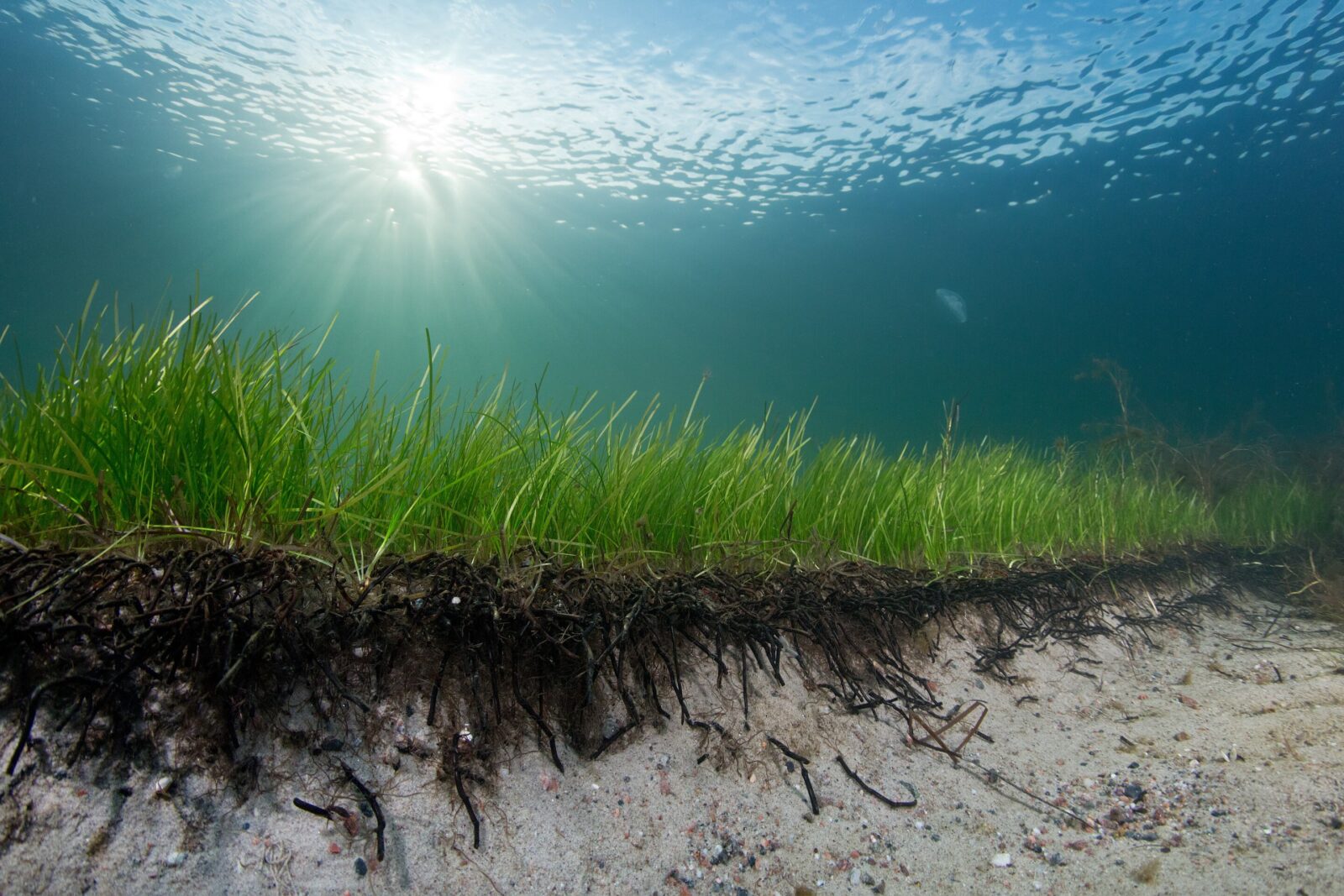
The sea devours large tracts of land when storms wash sand out to sea from the coast. A new study involving a researcher from the University of Gothenburg has shown that seagrass can reduce cliff erosion by up to 70% thanks to its root mats binding the sand. Coastal erosion is a global problem that is often combated by replenishing the coast and beaches with new sand in locations where storms wreak the greatest havoc. According to a 2016 survey conducted by the Geological Survey of Sweden, 12% of Skåne’s coastline in southern Sweden is vulnerable to increasing rates of coastal erosion. It is an even bigger issue in other countries. In the Netherlands, the coastline is protected through the construction of dikes made from stone and mud. Another solution is to utilize nature’s own defenses against coastal erosion. In this new study, researchers examined the importance of seagrass for preserving the coastline. “We have seen that seagrass meadows in the coast are valuable assets in mitigating erosion. We already know that their long canopies serve as breakwaters, but now we can show that their root mats also bind together the underwater sand dunes, effectively reinforcing them,” says Eduardo Infantes, a marine biologist at the University of Gothenburg and the lead author of the study which has been published in the journal Marine Ecology Progress Series. More powerful storms in the future Common eelgrass is a seagrass species that grows along Sweden’s coasts, and there are areas with large seagrass meadows growing on the bottom sediments, such as in Skåne. In other places, the seagrass has disappeared altogether. This not only represents an ecological loss, it can also mean that the coast becomes more vulnerable to erosion. As the climate changes, storms risk becoming more powerful, which in turn can lead to an increase in coastal erosion. Approximately 8% of the world’s population live in areas at an elevation of fewer than 10 meters above sea level. Rising sea levels may see many people affected by coastal erosion. “This is why it is even more important to preserve those seagrass meadows that still exist today and to replant seagrass in those places where it has disappeared. In our research, we have made successful attempts to restore common eelgrass meadows on the Swedish west coast, but if such replanting efforts are to succeed, there is a need for detailed studies of the current status seabed environment,” says Eduardo Infantes. In this study, the researchers took samples of sandy sediments with and without common eelgrass from a number of sites and placed them in a large tank capable of simulating waves. The experiments demonstrated that the sand is eroded far less by waves when seagrass is growing in it. The researchers also took samples from muddy seabeds but found that the effect of the seagrass there was less. However, this matters less since muddy seabeds are most commonly found in fjords and other areas that are less exposed to waves. More factors in field tests The next step will be to move out of the laboratory environment and take measurements of sand erosion on an exposed shoreline along the coast. Other factors such as currents, traffic on the water, inflows from rivers etc. can then affect the erosion. “It’s more complicated in the field, but we have created realistic storm waves in our experiments and the seagrass has clearly shown a protective effect against erosion. I think we will be able to demonstrate the similar effects in field tests,” says Eduardo Infantes. More information: E Infantes et al, Seagrass roots strongly reduce cliff erosion rates in sandy sediments, Marine Ecology Progress Series (2022). DOI: 10.3354/meps14196
Legacy of ancient ice ages shapes how seagrasses respond to environmental threats today
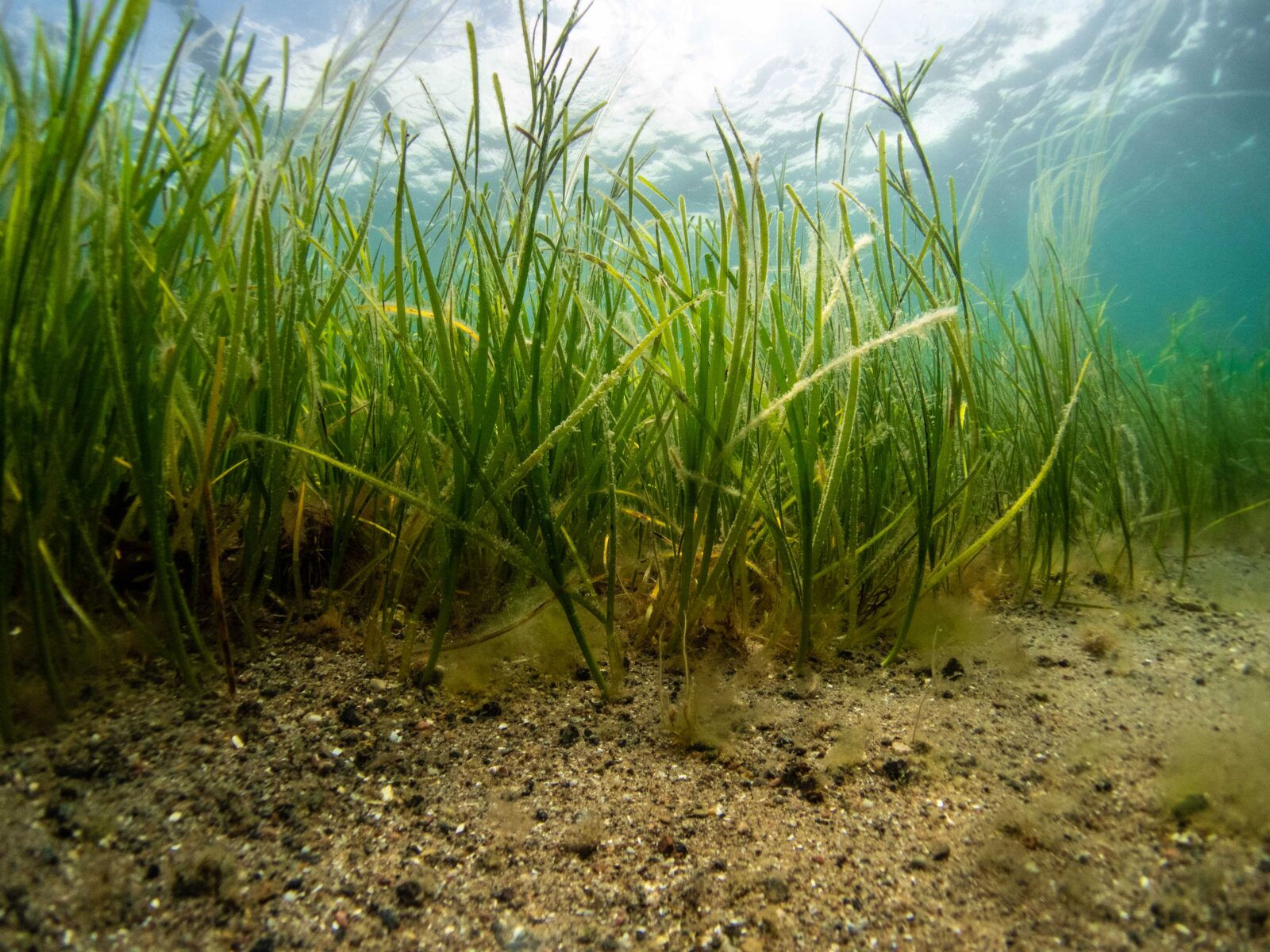
Deep evolution casts a longer shadow than previously thought, scientists report in a new paper published the week of Aug. 1 in the Proceedings of the National Academy of Sciences. Smithsonian scientists and colleagues looked at eelgrass communities—the foundation of many coastal marine food webs along the north Atlantic and Pacific coasts—and discovered their ancient genetic history can play a stronger role than the present-day environment in determining their size, structure and who lives in them. And this could have implications for how well eelgrasses adapt to threats like climate change. About a half-million years ago, when the world was warmer, some eelgrass plants made the difficult journey from their homes in the Pacific to the Atlantic. Not all the plants were hardy enough to make the journey across the Arctic. For those that succeeded, a series of ice ages during the Pleistocene Epoch further affected how far they could spread. Those millennia-old struggles left lasting signatures in their DNA: Even today, eelgrass populations in the Atlantic are far less genetically diverse than those in the Pacific. Still, in the classic “nature versus nurture” debate, scientists were stunned to discover that genetic legacy sometimes does more to shape modern eelgrass communities than the current environment. “We already knew that there was big genetic separation between the oceans, but I don’t think any of us ever dreamed that that would be more important than environmental conditions,” said Emmett Duffy, marine biologist with the Smithsonian Environmental Research Center and lead author of the report. “That was a big surprise to everybody.” Eelgrasses in hot water Eelgrass is among the most widespread shallow-water plants in the world. Its range spans from semi-tropical regions like Baja California all the way to Alaska and the Arctic. Besides providing food and habitat for many undersea animals, eelgrass offers a plethora of services to humans. It protects coastlines from storms, soaks up carbon and can even reduce harmful bacteria in the water. But in most places where it grows, eelgrass is the dominant—or only—seagrass species present. That makes its survival critical to the people and animals that live there. And the lower genetic diversity in the Atlantic could make it hard for some populations to adapt to sudden changes. “Diversity is like having different tools in your tool belt,” said Jay Stachowicz, a co-author and ecologist with the University of California, Davis. “And if all you’ve got is a hammer, you can put in nails, but that’s about it. But if you have a full complement of tools, each tool can be used to do different jobs more efficiently.” Ecologists have already seen eelgrass disappearing from some regions as the waters heat up. In Portugal, its southernmost spot in Europe, eelgrass has begun pulling back and moving farther north, into cooler waters. “I don’t think that we’re going to lose [eelgrass] in the sense of an extinction,” said co-author Jeanine Olsen, an emeritus professor at the University of Groningen in the Netherlands. “It’s not going to be like that. It’s got lots of tricks up its sleeve.” But local extinctions, she pointed out, are going to occur in some places. That could leave regions that depend on their local eelgrass in trouble. Reaching a more ZEN worldview Realizing the urgent need to understand—and conserve—eelgrass worldwide, Duffy and his colleagues banded together to form a global network called ZEN, which Project Seagrass was a partner of. The name stands for Zostera Experimental Network, a nod to eelgrass’s scientific name, Zostera marina. The idea was to unite seagrass scientists all over the world, doing the same experiments and surveys, to get a coordinated global picture of seagrass health. For the new study, the team studied eelgrass communities at 50 sites in the Atlantic and Pacific. With 20 plots sampled per site, the team came away with data from 1,000 eelgrass plots. First they collected basic eelgrass data: size, shape, total biomass and the different animals and algae living on and around them. Then they collected genetic data on all the eelgrass populations. They also measured several environmental variables at each site: temperature, the water’s saltiness and nutrient availability, to name just a few. Ultimately, they hoped to discover what shaped eelgrass communities more: the environment or the genetics? After running a series of models, they discovered a host of differences between the Atlantic and Pacific eelgrass ecosystems—differences that closely aligned with the genetic divergence from the Pleistocene migration and subsequent ice ages. While Pacific eelgrasses often grew in “forests” that regularly surpassed 3 feet tall and sometimes reached more than twice that high, the Atlantic hosted more diminutive “meadows” that rarely came close to that height. The genetic differences also aligned with the total biomass of eelgrass. In the Atlantic, evolutionary genetics and the present-day environment played equally strong roles in eelgrass biomass. In the Pacific, genetics had the upper hand. These impacts flowed up to other parts of the ecosystem as well. When it came to small animals that lived in the eelgrass, like invertebrates, the genetic signature from the Pleistocene again played a stronger role than the environment in the Pacific—while the two played equally strong roles in the Atlantic. “The ancient legacy of this Pleistocene migration and bottleneck of eelgrass into the Atlantic has had consequences for the structure of the ecosystem 10,000 years later,” Duffy said. “Probably more than 10,000.” Conserving the future That ancient genetics can play such a strong role—sometimes stronger than the environment—has some ecologists concerned about whether eelgrass can adapt to more rapid changes. “Climate warming—by itself—is probably not the primary threat for eelgrass,” Olsen said. Pollution from cities and farms, which can cloud the water and lead to harmful algal blooms, also endangers seagrasses. That said, the vast array of environments eelgrass can survive in testifies to its hardiness. “I’m hopeful because our results illustrate long-term resiliency to repeated, major changes in thermal tolerances and the wide range of eelgrass habitats over about half the Northern Hemisphere,” Olsen said.
Seagrass meadows are reliable fishing grounds for food
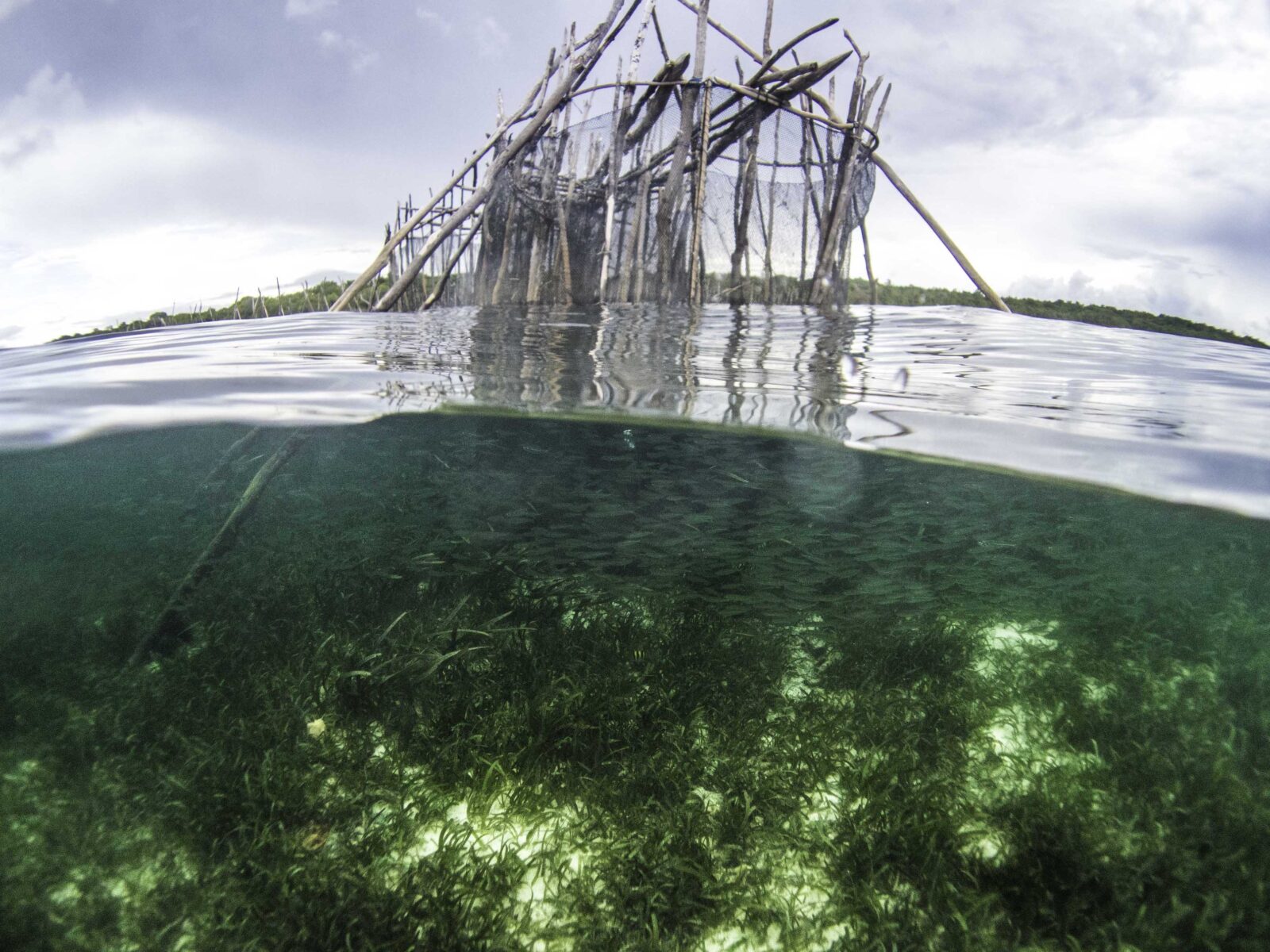
A new study shows that seagrass fisheries provide a reliable safety-net for poor fishermen, since they perceive those habitats to maintain large fish catches over time. Surprisingly, even more so than coral reef fisheries, which people normally associate with small-scale fishery. Seagrass meadows are routinely used as a fishing habitat across the Indo-Pacific region to sustain millions of households by providing fish and other animals for food and income from fishing. A new study in Ocean and Coastal Management investigated how and why households use seagrass meadows across Cambodia, Tanzania, Sri Lanka and Indonesia in the Indo-Pacific region by conducting interviews that asked what habitats they used and which they preferred. Benjamin Jones, director of Project Seagrass and PhD student at the Department of Ecology Environment and Plant Sciences, Stockholm University, says: “Seagrass was the most common habitat used for fishing. Nearly half of all households we talked to preferred fishing in seagrass over other habitats such as coral, mangroves, open ocean, mud and rock for example. This was surprising because most people think of reef fisheries as the key tropical small-scale fishery, but we show that its actually engagement in seagrass fisheries that are much more characteristic of households.” When the researchers asked the fishermen why they preferred seagrass, they expressed a general feeling of reliability: seagrass meadows always provide large catches and fish and invertebrates are always found there. This is likely due to the ecological role that seagrass meadows play for fish. They provide valuable nursery habitats with lots of places for fish to hide and grow which means that there is often a high abundance of fish present. The study also revealed that 3 in 20 people across the region were reliant on seagrass meadows as their fishing ground and did not fish anywhere else. The research from households in 147 villages also revealed that reliance on seagrass meadows was strongly influenced by household income: “Household income had two different effects. On one hand, poorer households were less likely to own motorboats. These were reliant on seagrass as they were unable to fish elsewhere, seagrass is close to shore and easy to access without a motor. On the other hand, wealthier households were more likely to own certain types of fishing gear that incentivized them to use seagrass due to high rewards and low effort requirements. These were static fishing fences that don’t require a fisherman to be present” says Benjamin Jones. Study co-author and fellow Project Seagrass director Leanne Cullen-Unsworth, says “Our results highlight the need for empirical household scale data for management of seagrass meadows. People use and value seagrass for many different reasons so safeguarding seagrass is vital to ensure that all people, all of the time, have equitable and equal access to the resources seagrass provides.” The study was a collaboration between scientists from Stockholm University, Project Seagrass, Swansea University, Uppsala University, Hasanuddin University, among others. Open Access paper: Jones, B.L.H.; Unsworth, R.K.F.; Nordlund, L.M.; Eklöf, J.S.; Ambo-Rappe, R.; Carly, F.; Jiddawi, N.S.; La Nafie, Y.A.; Udagedara, S.; Cullen-Unsworth, L.C. Dependence on seagrass fisheries governed by household income and adaptive capacity. Ocean & Coastal Management 2022, 225, doi:10.1016/j.ocecoaman.2022.106247.
Spotlight on Scotland: The Sound of Jura
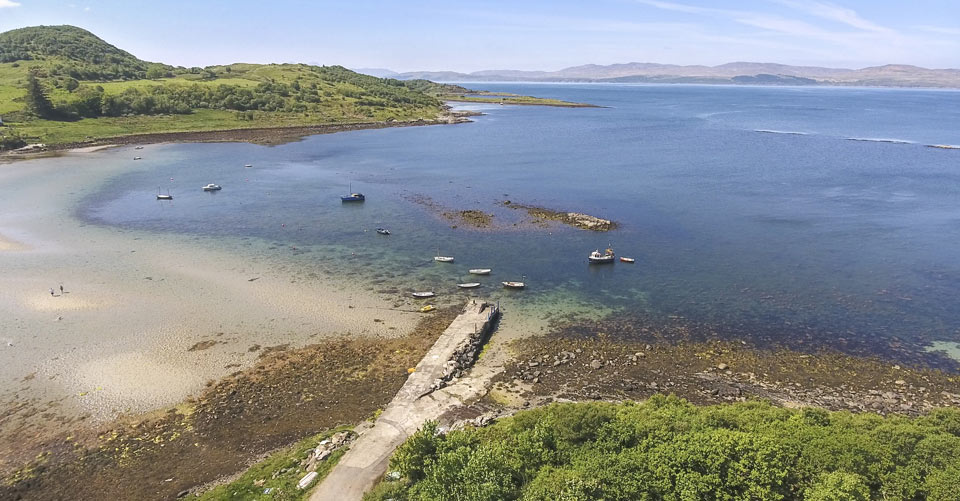
The weather in Scotland has been beautiful recently making the start of my Spring fieldwork very enjoyable – although surface water temperatures of 7 or 8℃ was a swift reminder that winter has only just left us! Last week I was very lucky to be shown around the Taynish peninsula (Loch Sween, Linne Mhuirich and the Sound of Jura) by members of the community group ‘Friends of the Sound of Jura.’ The Sound of Jura is home to some of the most fascinating and diverse marine life in Scotland and this community group seeks to protect the Sound from threats to the area’s wildlife, whilst championing the development of a local sustainable economy. The Friends of the Sound of Jura are an active member of the Coastal Communities Network, Scotland of which Project Seagrass is an Associated Organisation, and so this is not the first time I have had the pleasure of their company. The Sound of Jura and Loch Sween contain some of the most fascinating and diverse marine life in Scotland. The Loch Sunart to the Sound of Jura Marine Protected Area was established to protect the extraordinary flapper skate (Dipturus intermedia) that lives there. The Friends of the Sound of Jura are keen to point out that: “The International Union for the Conservation of Nature designates flapper skate as ‘critically endangered’, an unenviable category they share with the Sumatran rhino and mountain gorilla, meaning that the skate are among the rarest animals in the world, threatened with a high risk of extinction because of their rate of decline.” The first seagrass site we visited was Carsaig Bay (main blog photo) where there are two meadows of eelgrass (Zostera marina). The first in relatively continuous and extends broadly the width of the buoys within the bay. The second is a smaller patch which can be found towards the north of the bay. In the summer months these meadows are reportedly full of life, and I would suggest definitely worth a snorkel if it’s safe to do so – the beach is very accessible. Sandeels in Carsaig Bay seagrass meadow July 2017. Photo taken by Sound of Jura Seaweeds. The second site we visited was Linne Mhuirich. Here there are meadows of both Eelgrass (Zostera marina), and Dwarf eelgrass (Zostera noltii). The Dwarf eelgrass is especially prevalent in the small basin at the south of Linne Mhuirich and is known to play an important part in the winter diet of the whooper swan (Cygnus cygnus), the mute swan (Cygnus olor), the brent goose (Branta bernicla) and the wigeon (Anas penelope). An eelgrass meadows in Linne Mhuirich in March 2016. Photo taken by Sound of Jura Seaweeds. The final seagrass site is where the water enters/exits in the south of Linne Mhurich (where it joins Loch Sween). Here there are also eelgrass meadows around the Ulva Islands and Taynish Island. The seagrass meadow at Taynish Island in Loch Sween June 2017. Photo taken by Sound of Jura Seaweeds. Mapping our seagrass meadows is a priority for Project Seagrass in Scotland as we move towards a national celebration of our seas next year (2020 has been designated Scotland’s Year of Coasts and Waters). 2020 is a year that will spotlight, celebrate and promote opportunities to experience and enjoy our beautiful coasts and waters and at Project Seagrass we want to make sure that seagrass meadows are front and centre of that conversation – so that we can identifiy and engage with meaningful restoration work in areas where it is needed. The work of community organisations such as the Friends of the Sound of Jura are central to this effort, indeed as an organisation we couldn’t do half of what we do without the tireless efforts of individuals and communities on the ground (and in the water) who want to make a positive difference for their marine environment. So thanks again to my hosts last week for sharing their extensive Local Ecological Knowledge with me, I’ll be back to see you soon! RJ PS – YOU can help contribute to seagrass conservation by spotting seagrass in your area. Download the app at SeagrassSpotter.org
Isadora Sinha on her Project Seagrass Experience
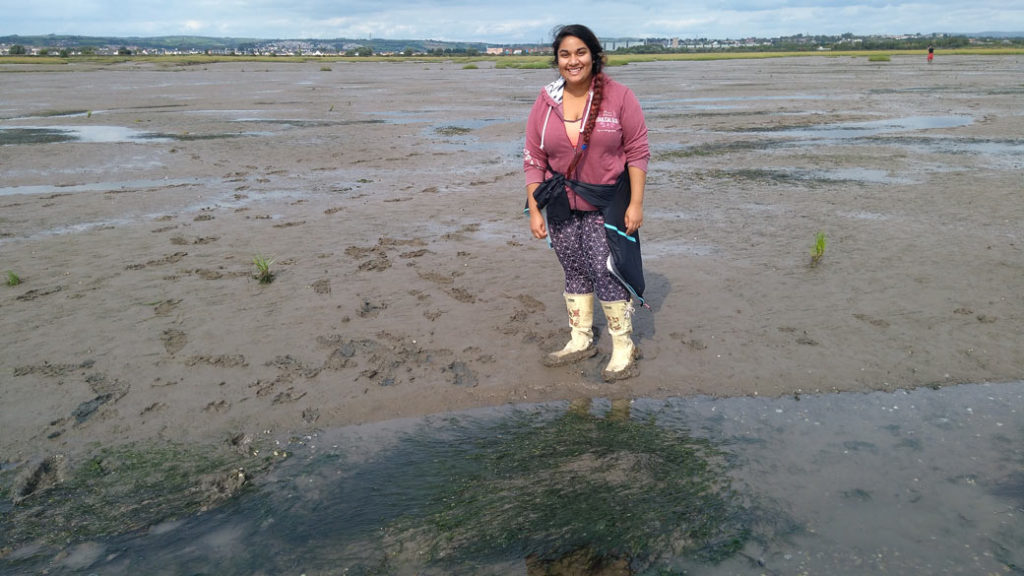
To give you a bit of an introduction, I am a Cardiff University Genetics (BSc) student going into my final year of my degree and have joined Project Seagrass for a Cardiff University Research Opportunities Programme (CUROP) summer research placement, at their offices in the Sustainable Places Research Institute. I stumbled upon Project Seagrass rather unexpectedly and had no idea what it was all about. Upon reading further into what seagrass is and the work Project Seagrass does, I was very keen on joining the team to learn more and take part. The Project Seagrass team are the nicest people I have worked with and maintain a lovely work environment where research and collaboration can flourish. When I first heard of the organisation, I did not know what seagrass was nor how important it is. Seagrasses are flowering plants that live in marine environments off the coast in shallow water. I know many people, including myself before this project, do not know the difference between seaweed and seagrass. Seagrass has roots, stems, leaves and flowers just like terrestrial plants do and holds some very important roles. I have learnt that seagrass is vital for: food security for coastal communities; fisheries; increasing water quality, reducing atmospheric carbon dioxide and as a food source for plant eaters like sea turtles! That is a long list of important roles which I had no clue about. This made me realise how seagrass is absent from public awareness. Rainforests get lots of publicity, yet seagrass, that can sequester carbon ~35 times more efficiently, somehow lacks it. Hopefully, in time that will change as more people realise that public awareness needs to be raised. Unfortunately due to several factors, seagrass is declining (if you want to learn about why, go to the Why Seagrass). This is catastrophic given the amount seagrass does for the marine environment as well as for us. Project Seagrass aims to push conversation efforts, educate the public and collect data on seagrass to the goal of restoring seagrass meadows to their former health and abundance. I am from a rather specialised degree, however, I found I quickly adapted to research here and am greatly enjoying it. Project Seagrass runs multidisciplinary projects which is why the collaborations are so exciting and surprising! My work itself is has been a mixed bag of literature reviews, data analysis, application development and learning lots about seagrass and citizen science. Seagrass is not sufficiently mapped due to the dynamic and vast nature of seagrass; it shrinks and grows with changing seasons and conditions. Plus, it is spread globally and is under water so it is often hard for scientists to fully monitor. This is where the use of citizen science could be a game changer. Citizen science is the participation of citizens in the collection of (usually ecological) data in collaboration with scientists. Citizen science is fantastic as it has the potential to increase data points by thousands compared to scientists collecting data alone, and it means more area is covered too. This Earth is shared by all of us so if people are passionate about conservation and want to help, citizen science is ideal. It gives individuals the chance to make a meaningful contribution to scientific knowledge as well as protect what they care about. In line with using citizen science to save seagrass, Project Seagrass has created a mobile application called SeagrassSpotter which is available on iOS and Android. SeagrassSpotter data is used to map seagrass. This is done as users report sightings of seagrass, whether it be while going kayaking or walking their dog on the beach. The report is logged in the form of a geographically tagged photo of the seagrass and is put publically on the SeagrassSpotter database so everyone can view it. Mapping seagrass is important so Project Seagrass has data that enables them to reinforce conservation action, petition for needed conservation policies, as well as make targeted actions in specific areas where more research is needed. This data would also help identify areas where seagrass has been declining and where it is still flourishing. My project concentrates on analysis of the demographics of current SeagrassSpotter users, which has never been investigated before. The demographics of users are of particular importance as we want to ensure that SeagrassSpotter is used by citizens of all ages and professions, not solely by researchers. If it turns out, participants are mainly researchers, then we need to think about how best to make SeagrassSpotter accessible and known to the wider public. If the results show that there are mainly young users, we need to find ways to make SeagrassSpotter more user friendly for the older generations. After analysing the results, I will generate applicable suggestions and improvements on how to increase citizen participation as well as ideas for technical application improvements. The demographic data is being obtained by means of a survey which was made in collaboration with, master’s student, Oliver Dalby. The survey has citizen participation motivation questions as the main portion which is what Oliver’s project focusses on. The demographic questions at the end of the survey is how the data I am analysing for my project is collected. I hope that my work will contribute to making SeagrassSpotter more widely used as well as add to the understanding the user-base of the application and what effect that has on data collection. This in turn would ideally lead to more users of the application, resulting in more data and more mapping of seagrass. The objective is to use this information to push for change to protect seagrass, subsequently saving wildlife and protecting communities. My time working on this project has opened my eyes to the importance of seagrass and its conservation. I have also learned new transferable skills as well as gained specific knowledge of citizen science. I can see the need for geneticists in seagrass research so who knows what could come of the future. I am happy to be here now and to
Seagrass citizen science: investigations into a potential seagrass saviour

A guest blogger? But why should I bother reading what he has to say? Well here’s a bit about me…. Originally hailing from Melton Mowbray, a small town in the middle of England known solely for producing pork pies and stilton cheese, my initial foray into marine science began with any other child’s obsession with the beach. My parents often remind me that after hours of poking around in rockpools and catching crabs I would throw tantrums when it was time to leave the coast and return to my landlocked home. As I became older and words like career and jobs became ever more prevalent in my life, I began searching for the holy grail of adult life, a job which I genuinely enjoyed. This search led me to undertake a Bachelor’s degree in Coastal Marine Biology in the now non-existent Scarborough Campus of the University of Hull; I should clarify that my class was the last year to graduate from that tiny seaside town before the satellite campus shut down. It was during my time as an undergraduate researching in the Aegean Sea that I first encountered seagrass ecosystems and immediately fell in love. Seagrasses are the only true marine angiosperm (flowing plants) and have been described by Professor Carlos Duarte (a famous seagrass scientist) as ugly duckling ecosystems. After returning from that career changing trip all my subsequent assessments were targeted towards seagrasses as I endeavoured to learn all I could about their function, ecology and reproduction. A room with a view… daily scenery when completing Aegean seagrass surveys. This obsession permeated through to my Master’s degree at the University of York in Marine Environmental Management where my supervisor shared a passion for these underappreciated ecosystems; it seemed fate had brought two seagrass nerds together at last. As I continued through the MSc with a specific focus on seagrasses when possible there came a time where I had to find an external placement partner to complete my second thesis with. Being still constrained firmly to the student financial situation I did not have the prospect of travelling to far flung places as some of my peers. However, this hardly mattered as my first choice was to work with the only active group of seagrass researchers in the UK, Project Seagrass! After finalising the logistics of the project and “upping sticks” to Cardiff in mid-July I now right this blog post sat at a desk in Project Seagrass HQ nestled in a surprisingly sunny Cardiff. But that’s enough about me, let’s talk seagrass citizen science! The project I am completing investigates the motivations, benefits, barriers and changes in knowledge associated with taking part in seagrass citizen science projects, specifically SeagrassSpotter and Seagrass-Watch (follow the links if you want to learn more about these projects). More broadly the project sets out to discover who is taking part, why they take part and when they take part. The project itself is being co-managed by myself and Isadora Sinha of Cardiff University who is heading up the demographics (the who) associated with the project. Throughout the project we utilised an online questionnaire which has been disseminated to current users of SeagrassSpotter, Seagrass Watch, and various seagrass-based email and social media groups (yes seagrass Facebook groups exist, if you’re interested you should join one). Given that citizen science, the participation of non-scientists in scientific research, has been labelled as a source of large data sets across varied space and time, seagrass citizen science has the potential to alleviate some of the primary threats these ecosystems face. Talking all things seagrass citizen science at a workshop organised by Cardiff University. Seagrasses are thought to be declining at around 7% a year, with declines primarily due to changes in water quality and increases in suspended sediments which reduce the ability of the plant to photosynthesise by blocking available sunlight. Additionally, researchers have little idea of local spatial coverages of seagrasses due in no short part to a chronic lack of public awareness of their existence; a concept which doesn’t apply to more charismatic ecosystems such as coral reefs. This decline represents not only the loss of a beautiful marine habitat (see the photo below if you don’t believe me) but also the services these ecosystems provide. Seagrasses are present on the coastal fringes of almost all continents worldwide where their presence promotes high primary and fisheries productivity, in turn supporting food security worldwide. You know the cod that forms an integral part of your chippy tea? Well it probably spent a good part of its juvenile years living in and around seagrass meadows. Seagrasses also add 3D structure to muddy bottoms, enhancing sediment capture which stabilises coastlines against erosion and acts to trap carbon dioxide helping to combat climate change. It is therefore hoped that by better understanding why people take part in seagrass citizen science we can reduce barriers to participation and increase public awareness and conservation of these crucial ecosystems. The project also represents the first time these topics have been studied in a seagrass specific context so will provide much needed insight into the finer state of seagrass citizen science. For a global review of seagrass citizen science see this article led by Project Seagrass Director Benjamin Jones (sorry, it’s not open access). At the time of writing the survey has been sent to over 1000 people and has been completed around 60 times. This may not seem like a worthwhile return, but such a small number of responses is common among online surveys. Results from the survey are being collated currently and will be prepared ready for my MSc thesis submission in early September. So, watch this space for seagrass updates! Together we can promote conservation and raise awareness of seagrasses to help this ugly duckling become beautiful swan.

